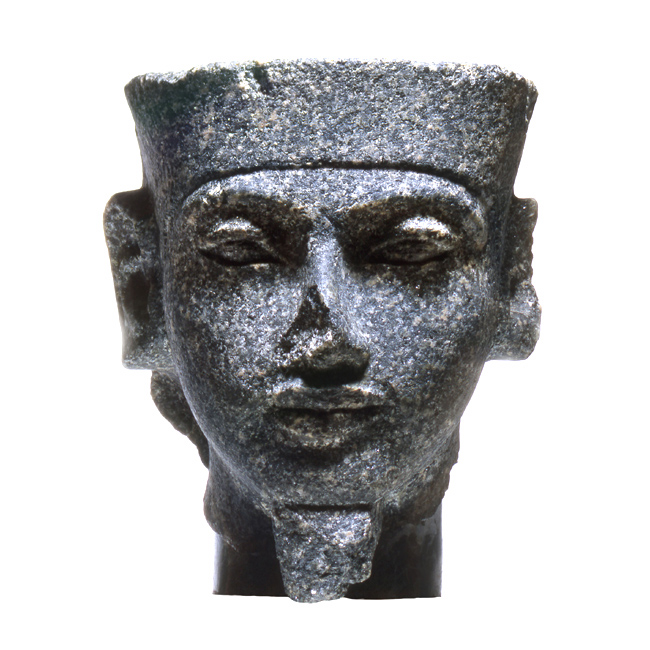The Heysel unwraps, over more than 4 000 sq. mts. three funerary chambers rebuilt exactly as they originally were. The Cinquantenaire Museum is echoing this exhibition by presenting two new rooms in which it gives particular attention to the presence of Tutankhamun and his family in its own collections.
A unique collection in Belgium
The largest collection of Egyptian art in Belgium is at the Cinquantenaire Museum in Brussels. It includes approximately 11 000 pieces. By taking the opportunity offered by the exhibition Toutankhamon, son tombeau et ses trésors (Tutankhamun, his tomb and his treasures) currently being shown at the Heysel, the museum has added and rearranged its own collection of Egyptian art, according to this same theme. Various objects have been brought out from the museum's reserves. The two stone heads of Tutankhamun as well as the three objects that come from his tomb are exhibited. They are funerary offers - two miniature hoes in copper and a fragment of textile - formerly given to king Albert Ist by the discover of the tomb, Howard Carter, and by the man who sponsored the diggings campaign, Lord Carnarvon
 The reduced models of the catafalques in which the sarcophagus, the coffins and the mummy of the young Pharaoh were found. Photo © Semmel
The visitor can also admire a collection of moldings of original sculptures and of reliefs from the Amarnian period, during the reign of Tutankhamun's father, Akhenaton. We see in this collection, among other remarkable pieces, a copy of the famous Nefertiti from the museum of Berlin. The copies, based on the originals kept in this museum, in the Louvre Museum and in the Museum of Cairo, were bought by the Cinquantenaire Museum in 1933 to be shown for educational purposes. Today they are once again shown to the public, but they also represent an interest for researchers. For one, a copy of a relief from a tomb in Amarna offers an alternative to the original work, which suffered irreversible damage.
Help to the Museum of Cairo
The case of the two heads of Tutankhamun's half-sisters is similar. The originals were robbed from the Museum of Cairo during the recent uprisings and have not been found since. Fortunately there are copies in the Musée du Cinquantenaire! The reduced models of the catafalques in which the sarcophagus and the coffins were found, and the mummy of a young, dead Pharaoh refer directly to the exhibition presented at the Heysel. The visitor will discover, in the two rooms especially arranged, Tutankhamun's childhood, his family, his government and his appearance.
To see more illustrations, click on VERSION FRANCAISE at the top
of this page
| 








